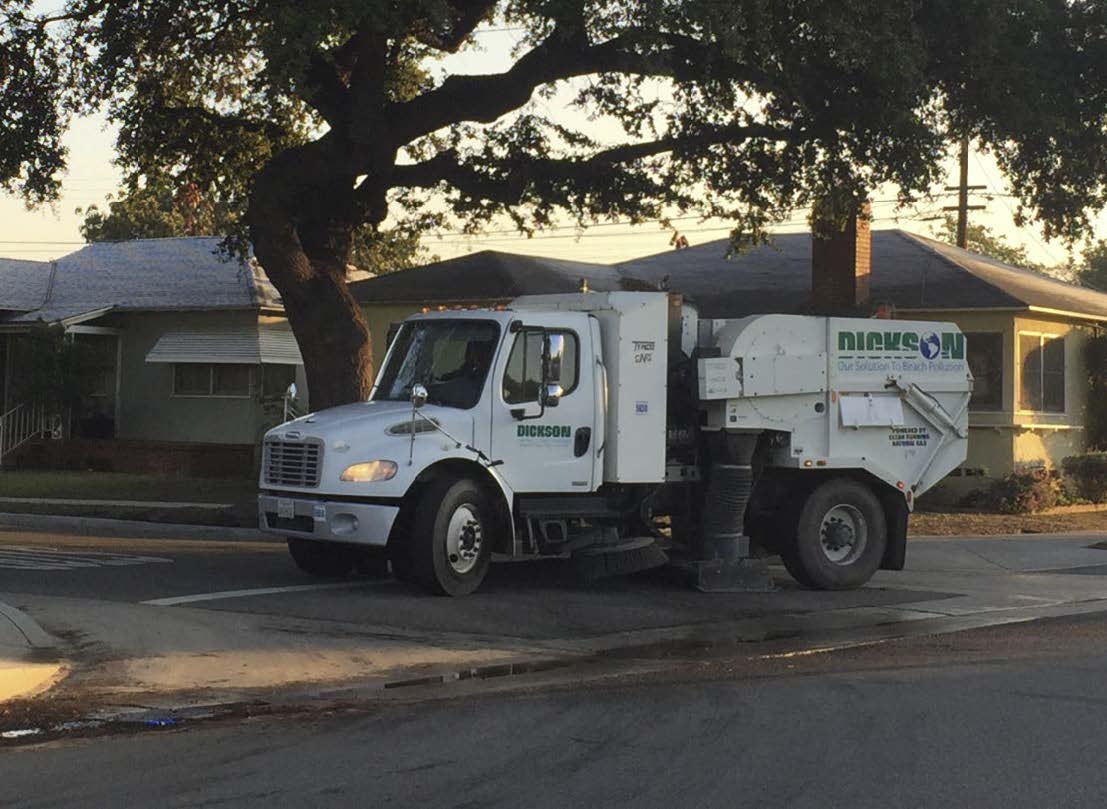SMC study to probe effectiveness of street sweeping for reducing runoff pollution

The Southern California Stormwater Monitoring Coalition (SMC) has launched a three-year study to investigate the effectiveness of routine street sweeping in removing contaminants that enter storm drains and contribute to runoff pollution.
The project, launched this summer and led by SCCWRP, will use a novel study design to measure how much bacteria, nutrients, trace heavy metals and other common stormwater contaminants are transported from streets into storm drains during both dry- and wet-weather flows, and if street sweeping is effective in preventing the transport of at least some of this pollution into storm drains.
The study represents the first known field-scale effort to isolate and study just the portion of street pollution that gets removed during routine street sweeping. Past studies have not sufficiently controlled for real-world environmental conditions and other confounding factors, stymieing researchers’ ability to quantify the effectiveness of street sweeping with statistical confidence.
Street sweeping is a routine part of stormwater management programs in communities across Southern California; managers rely on street sweeping to remove trash, plant material, sediment and other debris that is unsightly and can clog storm drain systems.
Previous studies of street sweeping have established that conventional stormwater pollutants are present in the material collected by street sweepers, but what stormwater managers don’t know is what portion of this pollution remains on the roadway after street sweeping. This information is needed for water-quality improvement modeling and planning, especially as managers work to measure and predict progress toward hitting their long-term water-quality improvement goals.
Under stormwater discharge permits, managers commonly receive a runoff pollution credit for implementing routine street sweeping as part of a broader set of non-structural source-control measures. The SMC study will probe whether this credit – which is based on limited data and best professional judgment – has been appropriately set.
During the study, segments of streets will be isolated in a way that prevents runoff from buildings, parking lots and other surfaces from mixing with the runoff generated by the street segments.
One set of street segments will be swept, while a corresponding set of similar street segments that will serve as the control group will not be swept. A rainfall simulator will be used to create controlled rainfall patterns for both street segments, ensuring results are not confounded by the unpredictable timing, intensity and duration of real-life wet-weather events.
Researchers will compare any differences in pollutant levels generated by the street segments that are swept vs. not swept.
If researchers are able to measure a difference in pollutant levels generated by swept vs. unswept street segments, the study could be scaled up and incorporated into the SMC’s Regional Stormwater BMP Monitoring Network.
Researchers are in the process of identifying candidate sites for the study, which is scheduled to start dry-weather testing in spring 2023 followed by wet-weather testing in winter 2023-2024.
The SMC is receptive to adding more project partners that could help scale up the study, including by expanding the number of pollutants, monitoring sites and/or types of rainfall simulations.
For more information, contact Dr. Elizabeth Fassman-Beck.
More news related to: Runoff Water Quality, Southern California Stormwater Monitoring Coalition, Stormwater BMPs, Top News